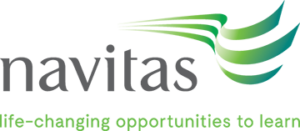Innovation at scale: Institutional-wide curriculum change at SIBT

If you are exploring how to improve student outcomes through change management, curriculum review and large-scale innovation, the SIBT curriculum transformation is a great case study. When this work was shared at HERDSA 2017, it received special mention in the conference closing remarks as excellent practice in curriculum transformation (the theme of the conference)!
Transforming the curriculum offers a unique chance to modernise across an institution, to blend in more technology for on-campus students and improve student experiences and outcomes.
Project components
There were three main aspects of the project:
- Project governance and management, providing the structure and plans for when and how activities would be undertaken. The establishment of outcomes, new learning and teaching principles, quality assurance and policies for ‘business as usual’ were included in this stream.
- Curriculum review and development, with a phased approach to redesigning and developing all units to reflect the new L&T principles. A new learning management system was also introduced in this stream.
- Teacher professional development, to ensure that all teaching staff, including the sessional teachers, were brought along the change management journey.
To kick start the project, forty-five people from SIBT and Navitas Learning and Teaching Services contributed towards authoring a new Learning and Teaching Framework. The Framework set out the overarching principles that would guide the transformation project and future decisions.
After taking stock of the current state – which included completely mapping the curriculum across 88 units that were to be redeveloped – we implemented the following:
How do we know it worked?
The evaluation process was built-in from the beginning and is still underway. A mixed methods approach was used to measure success including outcome measures, process analysis, qualitative data (collected through interviews, end-of-semester meetings and focus groups with teachers and managements) and quantitative data (gathered through students results and feedback surveys, as well as a global teacher technology survey that allowed us to compare SIBT to other colleges around the world).
So far, pass rates are up by an average of 7% from 2015-16 and student satisfaction has improved by an average of 6%.
In one of our exemplar Maths units (which was used as an early pilot and model for others), we achieved an unexpected student satisfaction rating of 100% across all five domains of student satisfaction.
Teacher capability development is another aspect that needs to be evaluated because it so central to institutional transformation and to lifting student outcomes. One valuable source was the global Navitas Teacher Technology Survey which provided insights into how SIBT teachers’ attitudes and practices compare to other institutions. SIBT teachers hold positive towards technology in a similar trend to teachers from other Navitas colleges, but they are more likely to be actively employing some technologies. For example, SIBT teachers are 19% more likely to use online spaces to communicate with students, 7% more likely to be actively recommending technology ideas to other staff, and 11% more likely than the global average to agree with the statement that ‘nothing stops me from using technology in teaching’.
Dive deeper!
If you are exploring how to improve student outcomes through change management, curriculum review and large scale innovation, watch the recording of the full presentation. We have shared some extra ‘lessons learned’ and advice on navigating all the variables as well as the complex interdependency between curriculum, students and delivery. You can also continue the conversation on Yammer.
